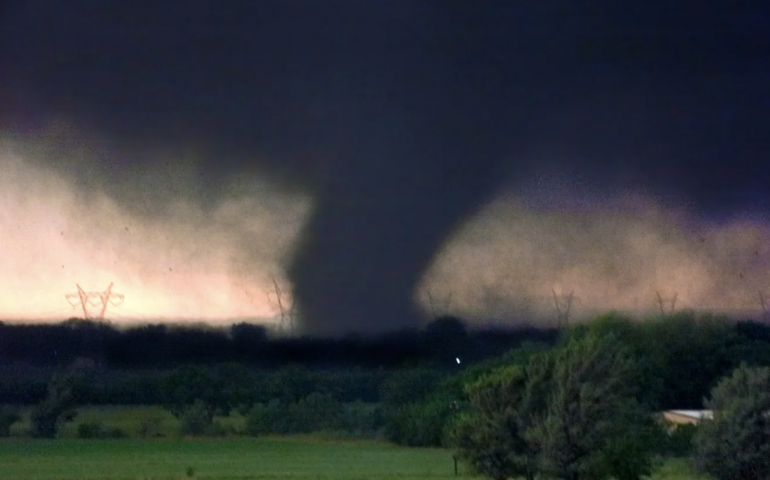If you are from the state of Oklahoma or the states that border Oklahoma, you are all too familiar with the threat of severe weather. The real question is why is Oklahoma such a hotspot for severe weather? What are some of the events that made Oklahoma commonly associated with the word “Tornado?”
Oklahoma is located in the central part of the United States, also known as the Great Plains Region. Along this Great Plains region is something weather enthusiasts like to call “Tornado Alley.” Tornado Alley stretches from South Dakota down to the middle of Texas. Oklahoma happens to be almost in the middle of Tornado Alley, along with Kansas, another State known for its severe weather.
Looking at the geographical location of this region, we can see that cold, dry air from the Rocky Mountains and Montana moves to the southeast, while warm, dry air moves west from New Mexico and Arizona. In addition, warm moist air moves northwest from the Gulf of Mexico. If you combine all of these different air events, you have severe weather. Unfortunately, Tornado Alley is where these all clash together.
To get a better understanding of some of the events that have occurred in Oklahoma, I asked some students and faculty to give me their most frightening experiences with severe weather. SNU student, Trey Leep, said, “Back in 2014, there was a tornado that passed through Moore and into Shawnee. I was huddled in the bathroom with my family in Shawnee and the tornado came directly over us. Amazingly, there was no exterior damage to the house, only some broken windows and lamps on the inside.” Another student, Tanner Dawes, states, “This past summer I was going to hang out with friends. We knew a storm was coming, and if I would have left five minutes earlier, I would have gotten there. I turned onto the highway and God opened the floodgates and it poured incredibly hard. I was going 15 mph on a highway and I didn’t even know what side of the road I was on. I eventually made it to a car wash and waited there for about 45 minutes before I went home.”
Although these are only a few examples, you can get a picture of how crazy these storms can become. Fortunately, I was able to find someone who had seen Oklahoma’s weather at its peak. Professor Jim Smith was teaching a class in Del City back on May 3rd, 1999, when one of the most powerful tornadoes in history happened to be closing in on Moore and its surrounding areas. Professor Smith starts by saying, “I remember watching the news that day and hearing about the possibility of a tornado outbreak.” A tornado outbreak is where the conditions are perfect for multiple supercell thunderstorms–supercells being the storms that produce tornadoes.
Professor Smith then continues, “I was giving a test that night, and normally we would have the test and then a couple of hours of actual class time, around four hours total. While the students were taking the test, I happened to turn on the television to watch the weather, and they were already tracking this tornado down in Chickasha with a helicopter. It started off pretty small, but as it got closer to Moore, it got bigger and bigger. I decided to shut the class down for the day, as a lot of the students were from the Moore area.”
Professor Smith then describes attempting to chase the tornado, saying, “I have always been really mesmerized by weather, and so I decided to hop in my car and get out my brand new camera to try and get some pictures. I got on Interstate 35 heading towards Moore, and as soon as I got to I-240, it had already passed, and there were police blocking the highway. I did get to see it pass pretty close to where I was though, and I got some pictures of it. It was six or seven in the evening by the time I was taking pictures, but they were really hard to see because of how dark the clouds were. I was close by where the wind speeds were measured, coming in at 302 mph (the highest wind speed ever recorded by a tornado). I went to call my wife via payphone as there were no cell phones at the time, and let’s just say she was not very happy with me.”
One thing you need to know if you plan on staying in Oklahoma for an extended period of time is that you have to be aware of the weather. You also have to be mentally prepared to face it. We saw it with Trey Leep and Tanner Dawes’ stories, and especially with Professor Smith’s story. You learn to appreciate those who are constantly trying to get people information in those situations, especially in events like a tornado outbreak.
Photo by Paul Hellstern
